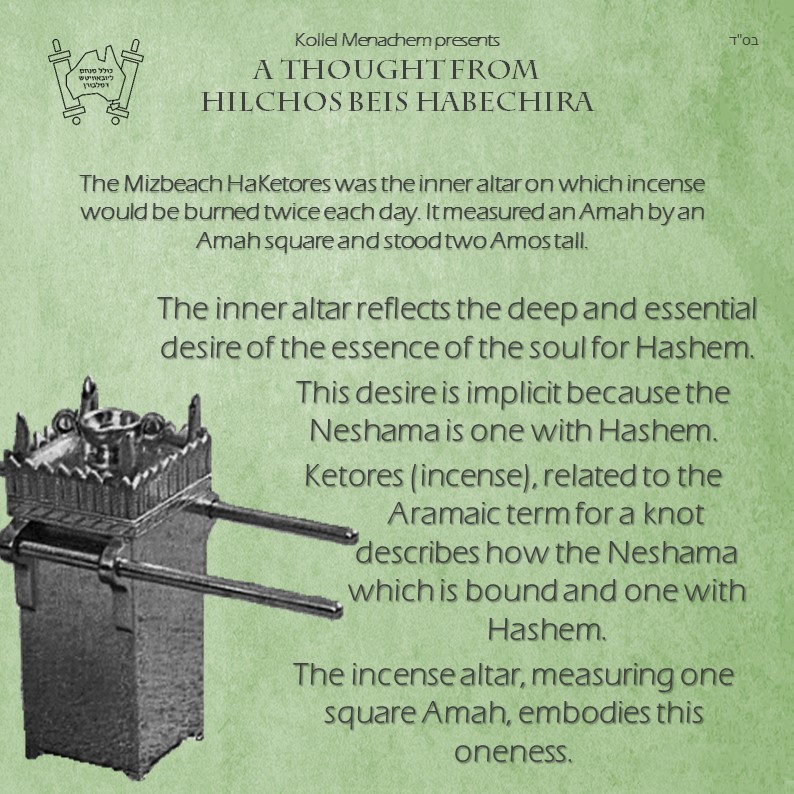|
The Mizbeach HaKetores was the inner altar on which incense would be burned twice each day. It measured an Amah by an Amah square and stood two Amos tall.The Midrash teaches that the outer sacrificial altar corresponds to the body. Like the body, this altar would “eat” and “drink” from the sacrifices and wine Nesachim. The inner altar parallels the soul since fragrance, being of a spiritual quality, is something that only the Neshama derives pleasure from.
Chassidus takes this idea deeper. The two altars reflect two dimensions of the soul itself; The outer altar represents the emotions of the conscious soul, referred to as חיצוניות הלב, the external heart. These are the feelings of love for Hashem that are developed through meditation on Hashem’s greatness. The internal heart (פנימיות הלב), represented by the inner altar, is the deep and essential desire of the essence of the soul. This desire is not created or defined (and thus limited) by our understanding. It is an implicit, powerful desire only for Hashem that every Jew possesses, because the Neshama on this level is one with Hashem. Ketores (incense) is related to the Aramaic term for a knot. A knot binds two things together so that they become one. The incense altar, measuring one square Amah, embodies this oneness. The Neshama too is called Achas (one) because it receives from Hashem’s oneness. And the essence of the Neshama, the internal heart, is the Yechida.
0 Comments
Leave a Reply. |
All posts
Read today's Beis Hamikash Thought Archives
July 2023
|

